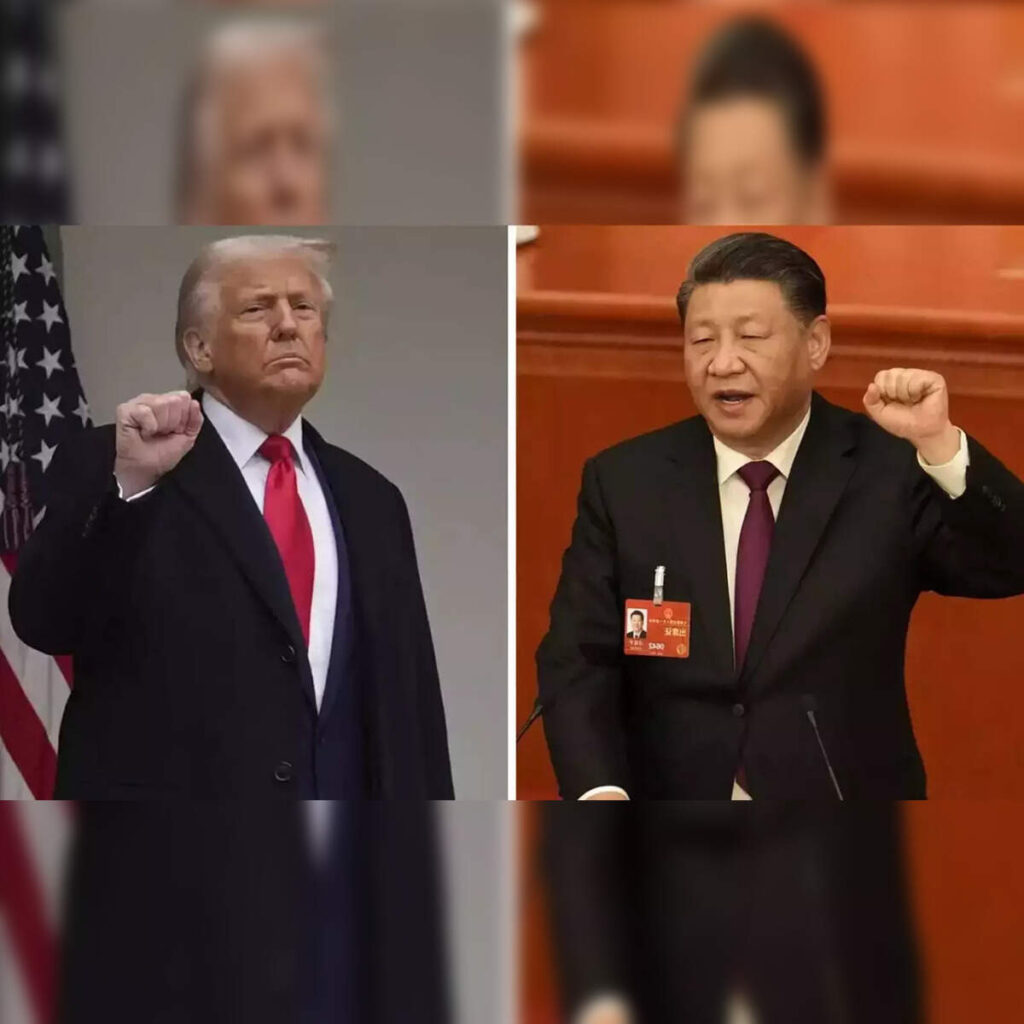Soon after organizing a 90 day truce last week end at Geneva through three day intensive talks between top officials of the United States and China, President Donald Trump is on a three nation tour covering Saudi Arabia, Qatar and UAE to pursue his deal making focusing on both trade and security. Simultaneously, the Chinese President Xi Jinping is wooing the Latin American countries to support him in his bid to restore the rule based international order on trade and tariffs.
President Xi addressed the fourth ministerial meeting of the China-Community of Latin American and Caribbean states (CELAC) in Beijing on May 13 expressing his readiness to work with the CELAC to build a shared development programme including trade for the economic growth of the Region. CELAC has more than thirty members including economically powerful countries like Brazil, Mexico and Argentina.
The same day on May 13, President Trump was in Saudi Arabia, the first country in his three nation tour from May 13 to May 16. Trump met Syrian President Ahmed Al Shara on May 14 morning which was a major diplomatic breakthrough since the former al Qaida commander took over as the interim president after the fall of the Russian ally Bashar al Assad. The meeting proved that for the US President, the past antecedents do not matter when it is linked with business and security interests. This interim President was in the U.S. jail for five years as he was charged as a terrorist.
U.S. agreed to sell Saudi Arabia an arms package worth US$ 142 billion which was the largest amount in any defence agreement concluded by the USA till now. The US defence companies bosses, present at Riyadh were ecstatic after the signing of the agreement. The other two countries Qatar and UAE have also prepared massive plans on economic agreement with the U.S. covering the latest technology, AI applications and weapons. Trump is expected to assure them of higher security assurance. For Trump, the visit seems to be a win win situation all through.
President Xi Jinping, on the other hand, met the important presidents of the Latin American countries including Brazil, Chile and Columbia and separately stressed the importance of protecting national interests in trade by fighting the tariff rates imposed by Trump. All these countries are scheduled to start new trade negotiations with the USA within the first week of July this year during the present 90 day truce.
According to CELAC sources, in 2024, China-LAC trade surpassed $500 billion for the first time, more than 40 times the amount at the beginning of this century. Over 20 LAC countries have joined the Belt and Road Initiative by signing different cooperation memoranda with China, and Colombia confirmed its participation in the BRI during the meeting. From Chancay Port to the Phoenix Park Industrial Estate, numerous major projects have taken root and yielded fruitful results. In cutting-edge sectors, such as new energy, photovoltaics, electric vehicles, digital technology and cross-border e-commerce, China-LAC cooperation continues to expand, with mutual benefit and win-win cooperation providing strong momentum for the partnership.
Brazilian President Luiz Inacio Lula da Silva said at a press conference on Wednesday in Beijing that Brazil is not worried about becoming a revenge target of US for getting closer to China. He said Brazil is a big country and the government has its own principles and positions. He reminded the U.S. President. The U.S. has a huge trade surplus with Brazil. Brazilian president is working with Mexico to frame a joint approach to trade talks with the U.S. trade officials. Both Brazil and Mexico have been badly affected as a result of reciprocal tariffs imposed by Trump.
As regards Trump’s current tour to the three West Asian nations, security commitment apart from high technology are the focus areas for all the three countries which are all cash rich and having huge potential for further energy resources development
US-Gulf relations have improved significantly since Trump returned to office. Frustrated at the perceived lack of US interest in their needs under the Biden administration, Saudi Arabia and the UAE had sought to diversify their military, technological and economic ties. With Trump in office, they all have started wooing him with lucrative deals which Trump is also looking. Trump has told the West Asians – political problems will remain, but the economy has to move and that is best possible only through building synergies. So all focus has to be on making deals which serve the interests of both.
Riyadh is also seeking US cooperation to develop a civil nuclear program, but that has been held up over its insistence on enriching uranium domestically – raising concerns in the US and Israel over nuclear weapons proliferation. Uranium, when enriched to high levels, can be used to produce nuclear weapons. Trump has to take a decision on it though the issue is very complicated with its impact on the region as a whole including Iran.
In March, the UAE announced a $1.4 trillion investment plan over 10 years focused on AI, semiconductors, manufacturing, and energy. Its existing US investments already total $1 trillion, according to its embassy in Washington. Trump’s visit is expected to formalize the big investment plans. In Qatar also, big investment plans have been kept ready for Trump’s consideration. So for Trump, series of deals are waiting and he is very happy.
After going back to Washington, President Trump will be assessing the response from his trade partners to his 90 day deadline. Already the U.S. has concluded its trade deal with the UK which is not a member of European Union. But this will have impact on the other countries of Europe including France and Germany which have still not responded. The EU members are supposed to take a collective decision.
The campaigns by both President Trump in favour of his reciprocal tariff and the Chinese President Xi Jinping focusing on his rule based trade order will intensify in the coming weeks as the July deadline approaches. Both know that there can not be a final winner, there has to be a compromise. Even the level of that will depend on the respective mobilization by Trump and his opponents in favour of their respective positions. The protracted battle on tariff rates is sure to continue for some more months, if not the whole year. (IPA Service)

 Airlines Halt Flights Amid Renewed Security Concerns
Airlines Halt Flights Amid Renewed Security Concerns 